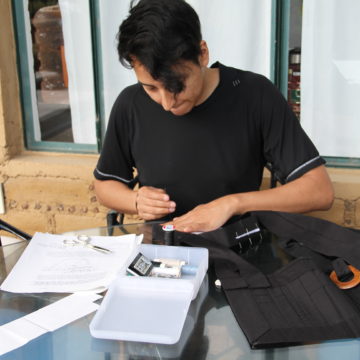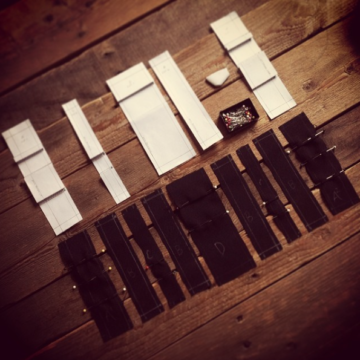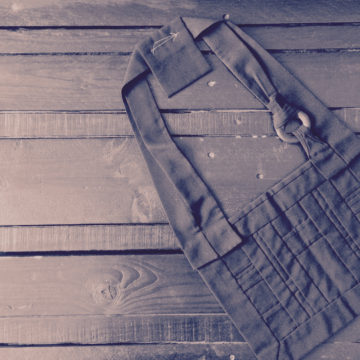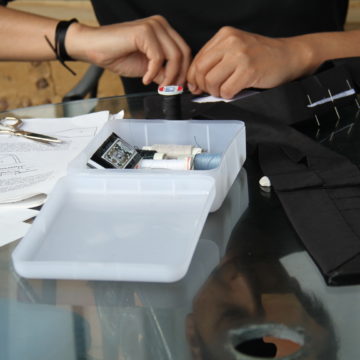
In our Japanese Zen lineage the precept-taking ceremony is called Jukai. Those who wish to take Jukai begin by sewing a Rakusu, a bib-like garment assembled from cloth strips. The practice emerged from the custom set by the Buddha, whose followers sewed their own robes. On the back of the Rakusu, the teacher writes the Dharma name chosen for the student.
I sewed my Rakusu three times before giving it to Hosso Sensei to write my name and take Jukai. The first time, I altered some of the assembly instructions, thinking I could improve the design. I dared to assume that I could revolutionize the technique that generations before me had followed.
In the midst of sewing, I raged against the forms of Zen—the services, the ceremonies, the bows, the oryoki bowls, and now this blasted bib! After calming down, I resumed the project and followed the instructions to the letter, but this time I wanted to impose my style by changing the type of fabric. Again, my ego was frustrated when Hosso Sensei asked me to re-do the Rakusu because the fabric was too rigid to be worn comfortably.

Hosso Sensei wrote my Dharma name on the third and final attempt one month later. Knowing how the sewing process had gone must have simplified my teacher’s task of choosing a name that reflected the potential within me and therefore what I should work on the most: Enso, perfect circle.
Sewing my Rakusu clearly revealed how I behave in life. I’m never pleased with what I do, what I have, where I am, or who I am. In my neurosis, there is always a possibility to create a better version of myself or my surroundings. What exists in the present seems either horrible or mediocre and must be fixed. As a designer/artist, I have often bragged about having the “sensitivity” to beautify the world around me, but through practice, my perception is changing. Sitting silently in front of a wall, still and attentive, I can realize the inherently beautiful reality that has been here all along.
Apart from my own, I have also sewn Rakusus for three Sangha peers. In silent attention, breathing with each stitch, the formless field—which is myself—appears. Each Rakusu is an opportunity to meditate with needle and thread and to understand another piece of myself.

When I sew a Rakusu for someone else, I am grateful to be entrusted with what I view as a noble task. At the same time, I’m sad that the owner has deprived themselves of the experience. I realize, though, that this judgmental attitude is still me trying to impose my ideas of beauty onto those around me.
I no longer seek to make a perfect Rakusu, but to simply calm my mind by following the form. When I manage to let go of such thoughts as “This will be the best one,” “I like it or don’t like it,” or “I should charge more for doing this,” the process flows harmoniously and the garment looks impeccable.
While helping others sew, I notice that, as with me, their personality traits surface in the stitches. One evening, a friend was on the brink of a breakdown after repeatedly trying to correct a mistake. She suddenly asked me, “Can I leave it like this? Do you think someone will notice?” I asked her if she has ever paid attention to the Rakusus worn by others, and told her nobody will care because “no one will wear this Rakusu except you.”

How right Hosso Sensei is. It does not matter if we think the Rakusu is ugly or perfect, because those are our spiteful labels against ourselves. What matters is the process and the form that contains us in constant attention and effort: our practice. The old masters repeated again and again: Zazen is enlightenment; enlightenment is Zazen. Thus, I increasingly appreciate the Zen forms, because sewing a Rakusu is enlightenment; enlightenment is sewing a Rakusu.
